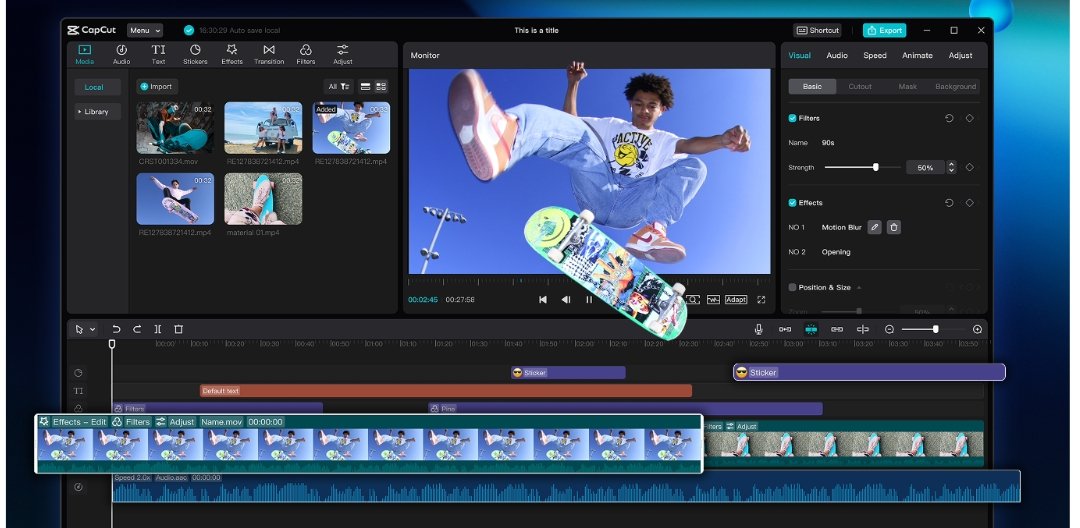Blog
The Evolution of AI Avatars: Where Will They Take Us in 5 Years?

Artificial intelligence (AI) is changing the way we interact with technology, and one of the most exciting developments is the rise of AI image generators and AI avatars. These technologies are starting to play a huge role in how we create content, communicate, and even shape our online presence. AI image generator can transform simple ideas into detailed, high-quality images in just a few seconds, while AI avatars allow us to create virtual characters that can speak, interact, and represent us in various online environments.
But what does the future hold for these technologies? Will AI avatars replace real human interactions in the next few years? Or will they serve as tools that enhance our digital experiences?
In this blog post, we’ll explore the evolution of AI avatars, their current uses, and where they might take us in the next five years.
The Rise of AI Avatars and Their Current Uses
AI Avatars: A Glimpse Into the Future of Virtual Interactions
Over the past few years, we’ve seen a shift in how we use avatars. Initially, avatars were simple, cartoon-like representations in video games and social platforms. They were static, not very interactive, and mostly used for fun or entertainment. However, with the advancement of AI, avatars are becoming much more realistic and functional.
Today, AI avatars are used in a variety of fields. For example, in customer service, AI avatars can interact with customers, answer questions, and even handle tasks like scheduling appointments. In entertainment, AI avatars are used as virtual influencers, appearing on platforms like Instagram and YouTube to promote products, entertain viewers, or share content. These avatars look and act like real people, but they are entirely AI-driven.
AI Image Generators: Transforming the Creative Process
At the same time, AI image generators have become powerful tools for creators. These tools use AI to generate images based on text descriptions. If you have an idea for a unique image, you can type it into an AI image generator, and within seconds, it will turn your concept into a visually stunning image. This has opened up new possibilities for designers, marketers, and artists who no longer need to rely solely on traditional methods of creation. Instead, they can generate high-quality images with just a few words or prompts.
Together, AI avatars and image generators are revolutionizing the way we create and interact with digital content. As these technologies evolve, they will continue to influence the entertainment, marketing, and communication industries.
The Current State of AI Avatars and Their Applications
Personalizing Online Interactions
One of the most significant uses of AI avatars today is in personalizing online interactions. Brands and businesses are using avatars to represent their products, services, or even themselves. These avatars can be used in customer service roles, where they interact with customers in real-time, providing assistance, answering questions, and guiding people through processes.
For instance, many companies are adopting AI avatars as their virtual customer service representatives. These avatars can engage with users through text or video, making the interaction feel more human-like. This helps to create a more engaging experience, as people are more likely to connect with a virtual character than a standard chatbot.
AI Avatars in Education and Training
In education, AI avatars are helping to bridge the gap between instructors and students. They can act as virtual tutors, providing personalized learning experiences. For example, students can interact with an AI avatar to get explanations of complex topics, ask questions, and receive feedback. These avatars can be programmed to adapt their teaching style to fit the needs of each individual learner, providing a more tailored and effective educational experience.
Additionally, in corporate training, AI avatars are being used to simulate real-world scenarios. For example, employees can engage with avatars in simulated customer interactions or practice soft skills like communication and negotiation. This provides a safe, interactive environment for learning.
What’s Next for AI Avatars?
More Realistic and Intelligent Avatars
As technology advances, we can expect AI avatars to become more lifelike and intelligent. Right now, AI avatars can mimic human behavior and respond to user input, but they are still limited in their ability to have complex, natural conversations. In the next five years, however, we may see avatars that are capable of understanding and reacting to emotions, tone, and context. These avatars could hold more realistic and meaningful conversations with users, making them even more effective for customer service, education, and entertainment.
AI Avatars in Virtual Reality and Augmented Reality
Another exciting development will be the integration of AI avatars with virtual reality (VR) and augmented reality (AR). Imagine stepping into a virtual world where your AI avatar is your guide, interacting with you and other avatars in real-time. This will revolutionize how we experience entertainment, travel, and even work. In the future, AI avatars could be used to represent us in virtual meetings, live events, or multiplayer games, allowing us to interact in a more immersive and engaging way.
How to Use CapCut’s AI Avatar Generator: 3 Simple Steps
CapCut, a popular video editing tool, has recently added am AI avatar generator feature to its desktop version. This allows users to create their own AI-powered avatars that can speak, move, and interact within videos. Here’s how to use it:
Step 1: Choose an Avatar
Open CapCut and go to AI Avatar. In the Avatar Library, you’ll find a wide range of avatars to choose from. Pick the one that best suits your project, whether you need a professional, casual, or fun look.
Step 2: Add Speech
Once you’ve selected your avatar, click on Add Speech. You can either type the text you want the avatar to speak or upload a pre-recorded voice clip. CapCut also offers multiple AI-generated voices, so you can choose one that fits the character you want to create.
Step 3: Customize & Export
After generating your avatar, you can fine-tune its appearance using CapCut’s editing tools. Adjust the background, add effects, or include additional elements like text and transitions. Once you’re happy with the video, click Export to save it to your device or share it directly to social media platforms like YouTube or TikTok.
The Future of AI Avatars and Their Potential Impact
As we look ahead, AI avatars are set to become a significant part of our digital lives. With continued advancements in AI, these avatars will become more intelligent, capable, and realistic. They will not only enhance the way we interact online but also change how businesses engage with customers, how students learn, and how creators build content.
Moreover, the combination of AI image generators and AI avatars will unlock new creative possibilities, making it easier than ever to generate customized images, videos, and interactive experiences. Whether it’s for entertainment, marketing, education, or personal use, these technologies will continue to shape the future of digital content.
In five years, AI avatars may no longer be just a novelty. They could become an essential part of our everyday online interactions, offering personalized, human-like experiences in ways we can’t fully imagine today. The evolution of AI avatars is truly just beginning, and the possibilities are endless.
Conclusion
The evolution of AI avatars is an exciting journey that holds immense potential for both creators and consumers. As these technologies continue to develop, we will see more lifelike, intelligent avatars that transform how we communicate, learn, and interact with digital content. By incorporating tools like AI image generators and AI avatars, the future of digital interaction looks more interactive, creative, and personalized than ever before.
